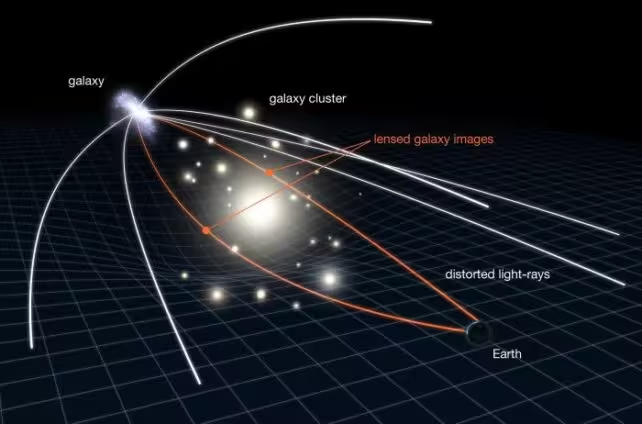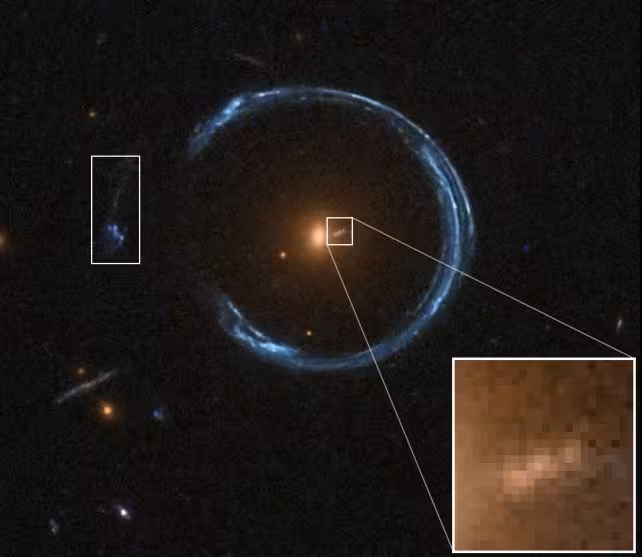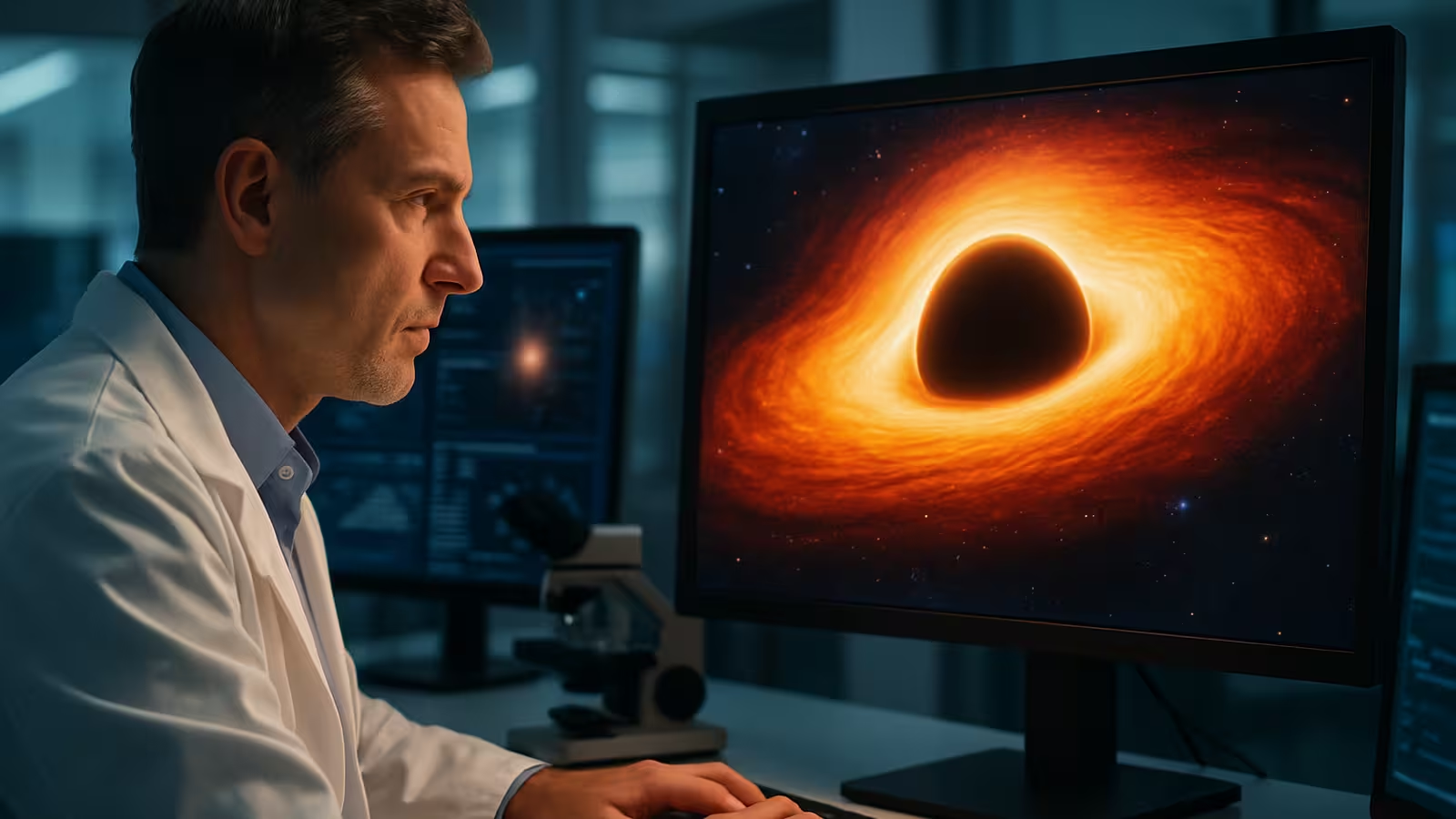6 Minutes
Discovery: an ultramassive black hole in SDSS J1148+1930
A galaxy located roughly 5 billion light-years from Earth, cataloged as SDSS J1148+1930, hosts a central black hole estimated at about 36.3 billion solar masses. That measurement places this object among the most massive black holes known and near practical upper limits predicted by astrophysical growth models. By comparison, the Milky Way’s central black hole, Sagittarius A*, weighs about 4.3 million solar masses — a tiny fraction of this newly measured behemoth.
Astronomers involved in the study describe the object as ultramassive rather than merely supermassive, reflecting its extraordinary scale. As Thomas Collett (University of Portsmouth) notes, "This is amongst the top 10 most massive black holes ever discovered, and quite possibly the most massive." The team emphasizes that their measurement reduces some of the uncertainties that have complicated earlier mass estimates for the largest black holes.
How the mass was measured: gravitational lensing and stellar dynamics
The black hole in SDSS J1148+1930 was identified and measured through a combination of gravitational lensing diagnostics and stellar kinematics. The system is associated with a striking visual feature known as the Cosmic Horseshoe: a horseshoe-shaped arc of light formed when a massive foreground galaxy lenses and magnifies a more distant background galaxy. In a gravitational lens, the degree and geometry of the distortion encode the foreground mass distribution, including the contribution from any central black hole.
Lead author Carlos Melo-Carneiro (Federal University of Rio Grande do Sul) points out that the black hole was detected while dormant — not actively accreting gas and producing a bright accretion disk — and was visible only because of its gravitational influence on surrounding stars and the lensed background light. In such lensed systems, precise modeling of the lensing arc together with measurements of stellar motions near the galactic center (stellar kinematics) allows astronomers to constrain the combined mass of the galaxy and its central black hole.
Stellar kinematics refers to the velocities and orbital patterns of stars near a galaxy’s center. Long-term monitoring of stellar orbits has previously provided robust mass estimates for quiescent black holes, including the one at the center of the Milky Way. Combining those dynamical methods with high-resolution lens models produced what the authors describe as a robust measurement for the SDSS J1148+1930 black hole.

Scientific context: practical limits, fossil galaxies, and comparative cases
From a theoretical perspective, a black hole can grow without a hard upper bound. In practice, however, astrophysical limits — such as the rate at which matter can be supplied and the age of the Universe (≈13.8 billion years) — constrain how large a black hole can become. Current estimates suggest the practical maximum mass achievable over cosmic time is on the order of 50 billion solar masses. The reported 36.3 billion-solar-mass black hole therefore sits close to that empirical ceiling.
Not all reported giant black holes carry the same confidence in their mass estimates. TON 618, an earlier noted candidate, was initially estimated at roughly 66 billion solar masses but was revised downward to about 40 billion after improved kinematic analyses. Compared with such cases, the SDSS J1148+1930 measurement benefits from the dual constraints of lensing geometry and measured stellar motions, lending increased confidence to the result.
A notable aspect of this system is that the host galaxy appears to be a "fossil galaxy": an object thought to represent the end state of a once-rich galaxy cluster that has merged into a single, massive galaxy. In that picture, multiple galaxies (each with their own central black hole) coalesced over time, with their central black holes eventually merging as well — a plausible pathway to forming an ultramassive black hole.
Implications for galaxy and black hole evolution
The discovery provides an observational data point for understanding how the most massive black holes assemble. If ultramassive black holes predominantly arise from hierarchical mergers of galaxy clusters and their resident black holes, then studying fossil systems like SDSS J1148+1930 can reveal the end stages of both galaxy and black hole evolution. The result also helps constrain models of black hole growth by accretion and mergers, and it tests theoretical upper limits set by cosmic time and available fuel.
Practically, improved mass measurements for ultramassive black holes affect how we interpret galaxy scaling relations (for example, correlations between black hole mass and host-galaxy properties) and how simulations model feedback processes that regulate star formation in massive systems.

Related technologies and future prospects
Refining measurements like this one will rely on higher-resolution imaging and spectroscopy from current and upcoming observatories. Instruments such as the James Webb Space Telescope (JWST), the Extremely Large Telescope (ELT), and next-generation adaptive optics on large ground-based telescopes will improve spatial resolution and sensitivity, enabling more precise stellar-kinematic maps and finer lens modeling. Better statistical samples of lensed and fossil galaxies will clarify whether SDSS J1148+1930 is exceptional or representative of a population of ultramassive black holes.
Continued comparison between lensing-based masses and independent kinematic or reverberation-based mass estimates will be essential to reduce systematics that can bias the largest reported black hole masses.
Conclusion
The central black hole in SDSS J1148+1930, measured at roughly 36.3 billion solar masses, ranks among the largest black holes ever reported and may approach the practical mass ceiling set by cosmic history and growth physics. Detected through a combination of gravitational lensing and stellar kinematics in the Cosmic Horseshoe system, this dormant, ultramassive black hole provides an important case study for how the Universe’s most massive black holes form — likely through hierarchical mergers in fossil galaxy environments. Future high-resolution observations and expanded samples will test whether these extreme masses are rare outliers or a predictable outcome of galaxy cluster evolution.
Quotes:
- "This is amongst the top 10 most massive black holes ever discovered, and quite possibly the most massive," — Thomas Collett, University of Portsmouth.
- "This discovery was made for a 'dormant' black hole — its detection relied purely on its immense gravitational pull and the effect it has on its surroundings," — Carlos Melo-Carneiro, Federal University of Rio Grande do Sul.
Source: sciencealert


Leave a Comment